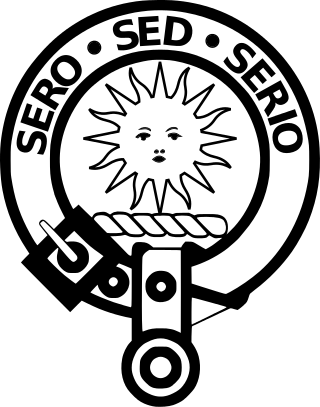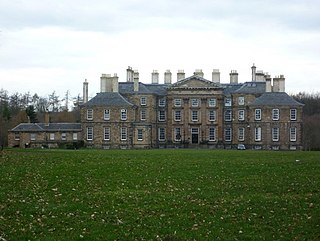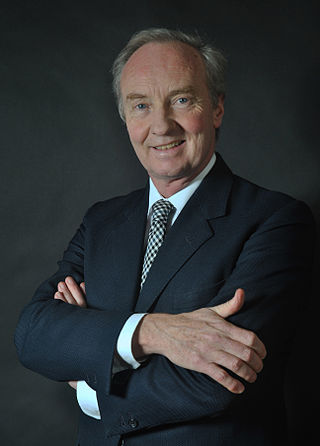
Duke of Buccleuch, formerly also spelt Duke of Buccleugh, is a title in the Peerage of Scotland created twice on 20 April 1663, first for James Scott, 1st Duke of Monmouth, and second suo jure for his wife Anne Scott, 4th Countess of Buccleuch. Monmouth, the eldest illegitimate son of King Charles II, was attainted after rebelling against his uncle King James II and VII, but his wife's title was unaffected and passed on to their descendants, who have successively borne the surnames Scott, Montagu-Scott, Montagu Douglas Scott and Scott again. In 1810, the 3rd Duke of Buccleuch inherited the Dukedom of Queensberry, also in the Peerage of Scotland, thus separating that title from the Marquessate of Queensberry.

The title Duke of Queensberry was created in the Peerage of Scotland on 3 February 1684 along with the subsidiary title Marquess of Dumfriesshire for the 1st Marquess of Queensberry. The Dukedom was held along with the Marquessate of Queensberry until the death of the 4th Duke in 1810, when the Marquessate was inherited by Sir Charles Douglas of Kelhead, 5th Baronet, while the Dukedom was inherited by the 3rd Duke of Buccleuch. Since then the title of Duke of Queensberry has been held by the Dukes of Buccleuch.

Clan Kerr is a Scottish clan whose origins lie in the Scottish Borders. During the Middle Ages, it was one of the prominent border reiver clans along the present-day Anglo-Scottish border and played an important role in the history of the Border country of Scotland.

Dalkeith Palace is a country house in Dalkeith, Midlothian, Scotland. It was the seat of the Dukes of Buccleuch from 1642 until 1914, and is owned by the Buccleuch Living Heritage Trust. The present palace was built 1701–1711 on the site of the medieval Dalkeith Castle, and was latterly renamed Dalkeith House.

Walter Francis Montagu Douglas Scott, 5th Duke of Buccleuch, 7th Duke of Queensberry,, styled Lord Eskdail between 1808 and 1812 and Earl of Dalkeith between 1812 and 1819, was a prominent Scottish nobleman, landowner and politician. He was Lord Keeper of the Privy Seal from 1842 to 1846 and Lord President of the Council.

Walter Francis John Montagu Douglas Scott, 9th Duke of Buccleuch and 11th Duke of Queensberry, was a Scottish peer, politician and landowner. He served in the Royal Naval Volunteer Reserve in the Second World War, and represented Edinburgh North in the House of Commons for 13 years.

Walter Scott, 5th of Buccleuch, 1st Lord Scott of Buccleuch was a Scottish nobleman and famous border reiver, known as the "Bold Buccleuch" and leader of Kinmont Willie's Raid.
This is a list of people, who have served as Lord Lieutenant of Selkirkshire. The office was replaced by the Lord Lieutenant of Roxburgh, Ettrick and Lauderdale in 1975.

Clan Douglas is an ancient clan or noble house from the Scottish Lowlands.

Richard Walter John Montagu Douglas Scott, 10th Duke of Buccleuch and 12th Duke of Queensberry,, styled as Lord Eskdaill until 1973 and as Earl of Dalkeith from 1973 until 2007, is a Scottish landholder and peer. He is the Duke of Buccleuch and Queensberry, as well as Chief of Clan Scott. He is a descendant of James, Duke of Monmouth, the eldest illegitimate son of Charles II and his mistress, Lucy Walter, and more remotely in a direct male line from Alan of Dol, who arrived in Britain in 1066 with William the Conqueror.

Branxholme Castle is a five-storey tower at Branxholme, about 3 miles south-west of Hawick in the Borders region of Scotland.

Newark Tower is a large, ruined tower house standing in the grounds of Bowhill House, in the valley of the Yarrow Water three miles west of Selkirk in the Scottish Borders. In addition to the keep, sections of a gatehouse and wall survive. It has been designated a scheduled monument by Historic Environment Scotland.

Branxholme is a hamlet in the Scottish Borders area of Scotland, overlooking the River Teviot, 3 miles southwest of Hawick, on the A7 road to Langholm.

John Charles Montagu Douglas Scott, 7th Duke of Buccleuch and 9th Duke of Queensberry,, styled The Honourable John Montagu Douglas Scott until 1884, Lord John Montagu Douglas Scott between 1884 and 1886 and Earl of Dalkeith until 1914 was a British Member of Parliament and peer. He was the father of Princess Alice, Duchess of Gloucester, and the maternal grandfather of Prince William of Gloucester, and Prince Richard, Duke of Gloucester.

Sir Walter Scott, 1st of Branxholme, 3rd of Buccleuch, known as "Wicked Wat", was a nobleman of the Scottish Borders and the chief of Clan Scott who briefly served as Warden of the Middle March He was an "inveterate English hater" active in the wars known as The Rough Wooing and a noted Border reiver. He was killed on Edinburgh High Street in a feud with Clan Kerr in 1552. His great-grandson was Sir Walter Scott, 1st Lord Scott of Buccleuch, the "Bold Buccleuch" (1565–1611), a border reiver famed for his role in the rescue of Kinmont Willie Armstrong.

Bowhill House is a historic house near Bowhill at Selkirk in the Scottish Borders area of Scotland. It is a member of the Historic Houses Association, and is one of the homes of the Duke of Buccleuch. The house is protected as a Category A listed building, and the grounds are listed on the Inventory of Gardens and Designed Landscapes in Scotland.

The Battle of Dryfe Sands was a Scottish clan battle that took place on 6 December 1593, near Lockerbie, Scotland. It was fought between the Clan Maxwell and Clan Johnstone after a hundred years of feuding between them. The Johnstones won a decisive victory over the Maxwells.

The Battle of Melrose was a Scottish clan battle that took place on 25 July 1526. Walter Scott of Branxholme and Buccleuch attempted to rescue the young James V of Scotland from the powerful Archibald Douglas, 6th Earl of Angus.

Eildon Hall, near St Boswells, Roxburghshire, is one of the houses belonging to the Dukes of Buccleuch and Queensbury. It is located at the foot of Eildon Hill, just south of the town of Melrose in the Scottish Borders. Princess Alice, Duchess of Gloucester is very descriptive of Eildon Hall, her childhood home, in her memoirs. She describes it as a "Georgian house with Victorian additions, made from the local coral pink sandstone," and "standing 600 feet above sea level." She also describes the view from the house as a "wonderful view of the valley below stretching away to the Cheviots thirty miles distant."
Elizabeth Marion Frances Montagu Douglas Scott, Duchess of Buccleuch and Queensberry, styled Countess of Dalkeith between 1981 and 2007, was a Scottish peeress and philanthropist.


















